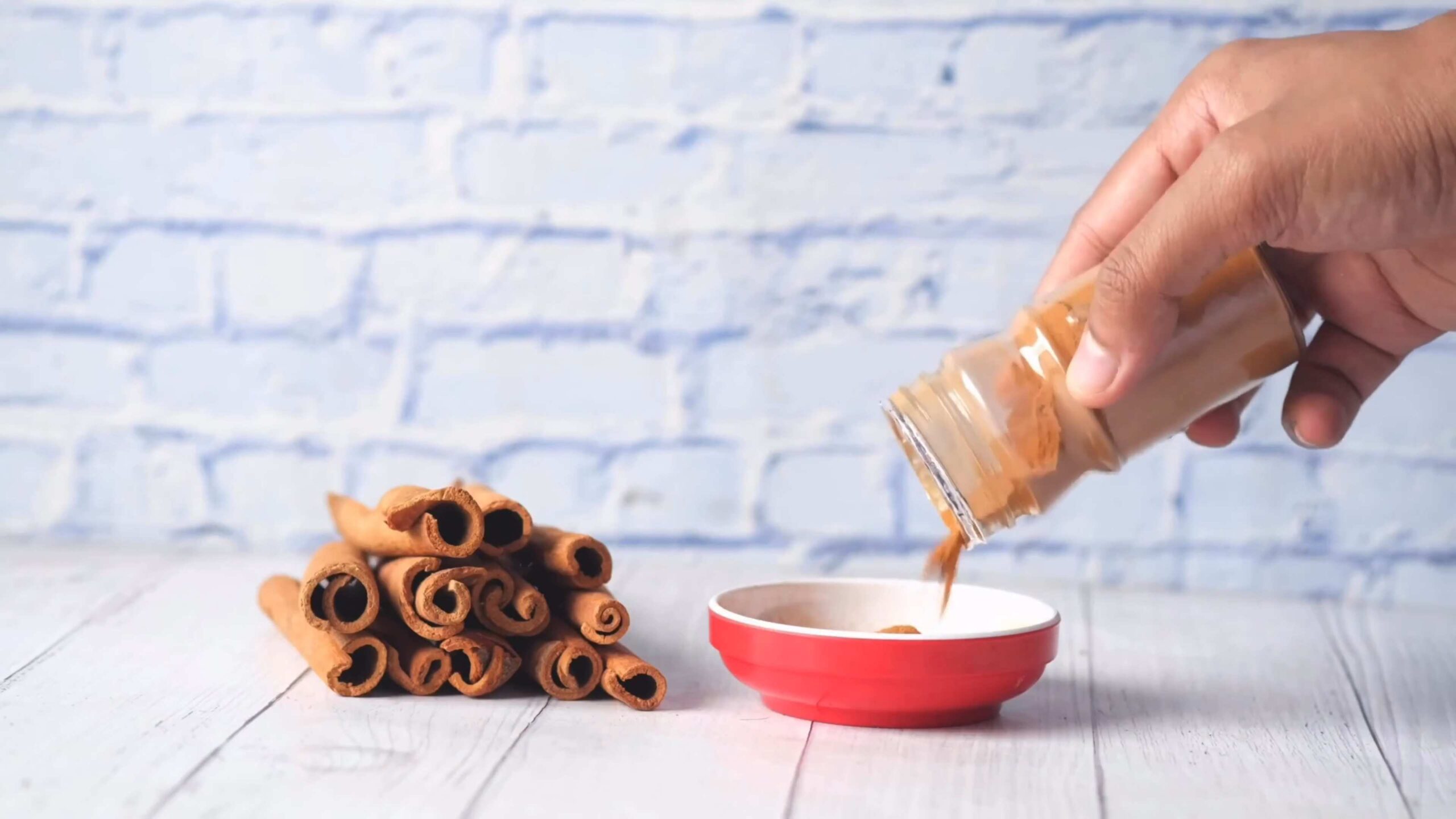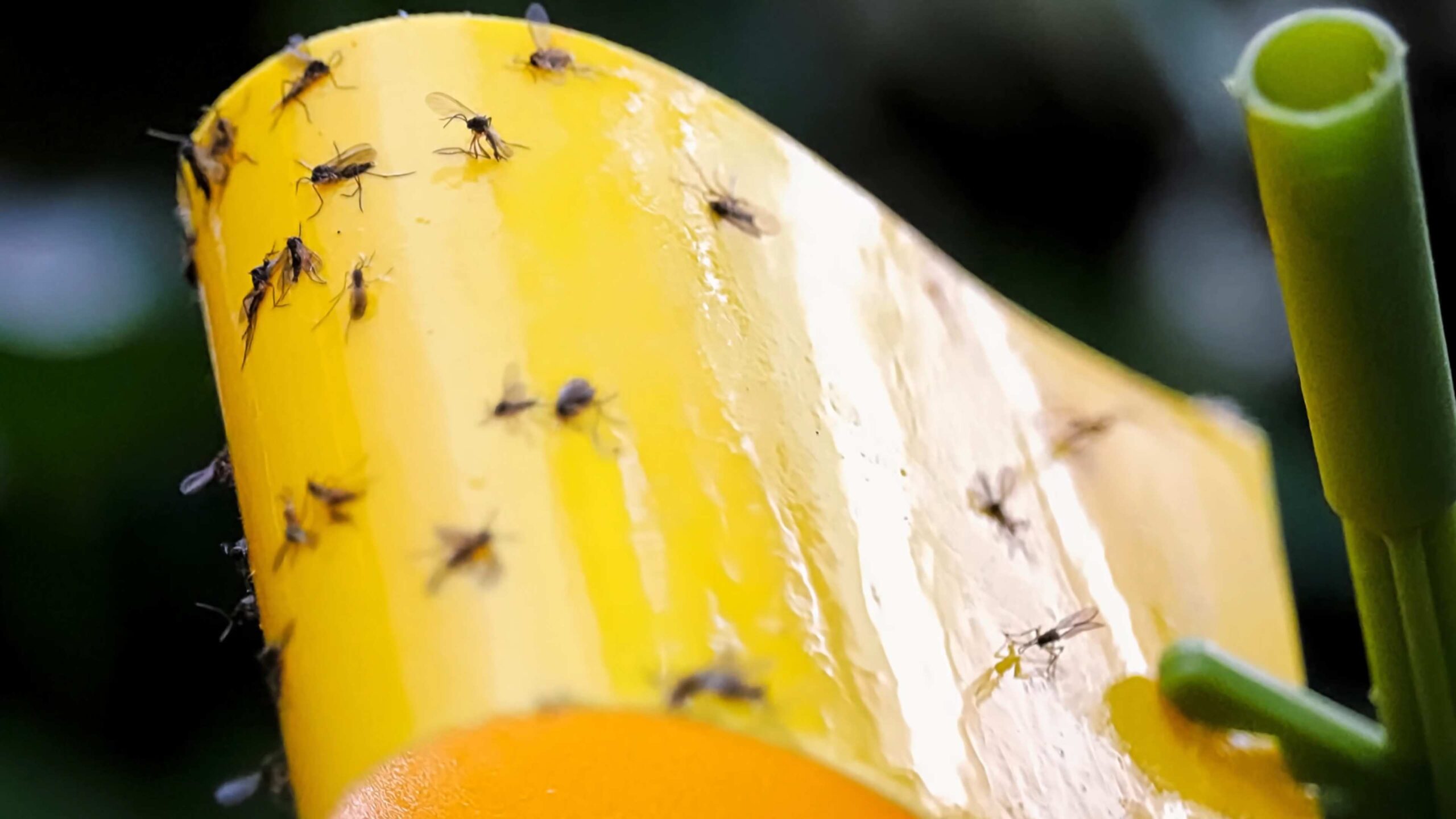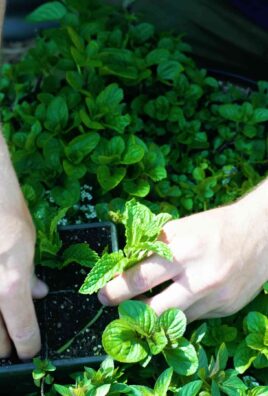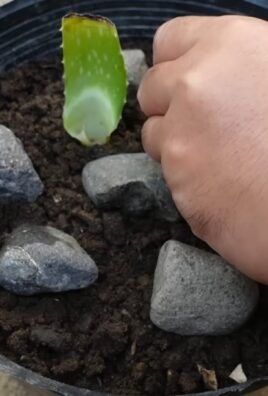Cinnamon for Fungus Gnat Control: Are pesky fungus gnats turning your indoor garden dreams into a buzzing nightmare? Don’t despair! I’m here to share a simple, effective, and delightfully fragrant DIY trick that will have those tiny terrors packing their bags. For centuries, cinnamon has been prized not only for its culinary uses but also for its medicinal and insecticidal properties. In ancient Egypt, it was even used in embalming processes – talk about a powerful spice!
But you don’t need to mummify your plants to benefit from cinnamon’s magic. Fungus gnats thrive in moist soil, feasting on decaying organic matter and laying their eggs, creating a seemingly endless cycle of annoying little flies. These gnats can damage your plants roots and stunt their growth. Nobody wants that! That’s where this simple cinnamon for fungus gnat control hack comes in. It’s a natural, non-toxic alternative to harsh chemical pesticides, making it safe for your plants, your family, and your pets. Plus, who doesn’t love the warm, comforting scent of cinnamon wafting through their home? Let’s dive in and learn how to banish those gnats for good!

DIY Cinnamon Fungus Gnat Control: A Natural Solution
Hey there, fellow plant lovers! Are you battling those annoying little fungus gnats buzzing around your precious plants? I know the feeling – it’s frustrating! But don’t reach for harsh chemicals just yet. I’ve got a fantastic, natural solution for you: cinnamon! Yes, that fragrant spice in your pantry can be a powerful weapon against these pesky pests. Let me walk you through how to use cinnamon to get rid of fungus gnats, step-by-step.
Why Cinnamon Works
Before we dive into the how-to, let’s quickly understand why cinnamon is so effective. Cinnamon contains a natural fungicide called cinnamaldehyde. This compound disrupts the growth of fungi, which are the primary food source for fungus gnat larvae living in the soil. By targeting the fungus, you’re essentially starving the larvae and breaking the gnat life cycle. Plus, it’s a much safer and more eco-friendly option than chemical insecticides.
What You’ll Need
* Ground cinnamon (the regular kind you use for baking)
* Water (tap water is fine)
* Spray bottle (a clean one, of course!)
* Small bowl or container
* Spoon or stirring utensil
* Optional: Coffee filter or cheesecloth (for straining)
Method 1: Cinnamon Soil Drench
This method involves watering your plants with a cinnamon-infused solution. It’s great for directly targeting the larvae in the soil.
Step-by-Step Instructions:
1. Prepare the Cinnamon Solution: In your small bowl or container, mix 1 teaspoon of ground cinnamon with 2 cups of warm water. Make sure the cinnamon is well dissolved. It might take a bit of stirring, and it’s okay if it doesn’t completely dissolve – we’ll address that in the next step.
2. Strain the Solution (Optional but Recommended): This step is crucial to prevent clogging your spray bottle. If you notice a lot of cinnamon sediment in your solution, strain it through a coffee filter or a piece of cheesecloth into another clean container. This will remove the larger particles and make it easier to spray.
3. Transfer to Spray Bottle: Carefully pour the cinnamon solution into your spray bottle.
4. Water Your Plants: Now, gently water your plants with the cinnamon solution, just as you normally would. Make sure to saturate the top layer of the soil, where the fungus gnat larvae reside. Don’t overwater, though! You want the soil to be moist, not soggy.
5. Repeat as Needed: Repeat this process every 7-10 days, or whenever you notice fungus gnats reappearing. Consistency is key! It might take a few applications to completely eliminate the infestation.
Method 2: Cinnamon Soil Sprinkle
This method involves directly applying cinnamon powder to the surface of the soil. It’s a simpler approach, but still effective.
Step-by-Step Instructions:
1. Prepare the Soil Surface: Make sure the surface of the soil is slightly moist. This will help the cinnamon adhere better. If the soil is dry, lightly mist it with water.
2. Sprinkle Cinnamon: Gently sprinkle a thin layer of ground cinnamon evenly over the surface of the soil. You don’t need to use a lot – a light dusting is sufficient.
3. Water Lightly (Optional): After sprinkling the cinnamon, you can lightly mist the soil again with water. This will help the cinnamon to penetrate the soil and reach the larvae.
4. Repeat as Needed: Repeat this process every 7-10 days, or whenever you notice fungus gnats reappearing. You might need to reapply after watering your plants.
Method 3: Cinnamon Tea Spray
This method involves brewing a strong cinnamon tea and using it as a foliar spray. It’s helpful for targeting adult fungus gnats that might be flying around your plants.
Step-by-Step Instructions:
1. Brew Cinnamon Tea: In a saucepan, combine 2 cups of water with 2 tablespoons of ground cinnamon. Bring the mixture to a boil, then reduce the heat and simmer for about 10-15 minutes. This will allow the cinnamon to infuse the water.
2. Cool and Strain: Remove the saucepan from the heat and let the cinnamon tea cool completely. Once cooled, strain the tea through a coffee filter or cheesecloth to remove any cinnamon particles.
3. Transfer to Spray Bottle: Pour the strained cinnamon tea into your spray bottle.
4. Spray Your Plants: Gently spray the leaves and stems of your plants with the cinnamon tea. Be sure to spray both the top and bottom of the leaves, as fungus gnats can hide underneath.
5. Test First: Before spraying your entire plant, test the cinnamon tea on a small, inconspicuous area to make sure it doesn’t cause any adverse reactions. Some plants are more sensitive than others.
6. Repeat as Needed: Repeat this process every 3-5 days, or whenever you notice adult fungus gnats.
Important Considerations and Tips
* Type of Cinnamon: I recommend using regular ground cinnamon that you find in the spice aisle of your grocery store. Ceylon cinnamon is often touted as being superior, but for fungus gnat control, the common variety works just fine.
* Soil Quality: Fungus gnats thrive in overly moist soil that is rich in organic matter. Make sure your potting mix is well-draining and avoid overwatering your plants. Let the top inch or two of soil dry out between waterings.
* Drainage: Ensure your pots have adequate drainage holes to prevent water from accumulating at the bottom.
* Topdressing: Consider adding a layer of sand or gravel to the top of your soil. This can help to create a barrier that prevents fungus gnats from laying their eggs.
* Yellow Sticky Traps: These traps are a great way to catch adult fungus gnats and monitor the severity of the infestation. You can find them at most garden centers or online.
* Ventilation: Good air circulation can help to prevent fungus gnats. Make sure your plants are not overcrowded and that they have adequate ventilation.
* Neem Oil: If cinnamon alone isn’t doing the trick, you can try combining it with neem oil. Neem oil is another natural insecticide that is effective against a wide range of pests.
* Hydrogen Peroxide: A diluted hydrogen peroxide solution (1 part 3% hydrogen peroxide to 4 parts water) can also be used as a soil drench to kill fungus gnat larvae.
* Be Patient: It may take several applications of cinnamon to completely eliminate a fungus gnat infestation. Don’t get discouraged if you don’t see results immediately.
* Prevention is Key: Once you’ve gotten rid of the fungus gnats, take steps to prevent them from returning. Avoid overwatering, use well-draining soil, and monitor your plants regularly for signs of infestation.
* Plant Health: Healthy plants are less susceptible to pests and diseases. Make sure your plants are getting the proper amount of light, water, and nutrients.
* Cleanliness: Keep your growing area clean and free of decaying organic matter, which can attract fungus gnats.
* Quarantine New Plants: Before introducing a new plant to your collection, quarantine it for a few weeks to make sure it’s not carrying any pests or diseases.
* Observe Your Plants: Regularly inspect your plants for signs of fungus gnats, such as small flies buzzing around the soil or larvae crawling on the surface.
Troubleshooting
* Cinnamon Not Dissolving: As mentioned earlier, cinnamon doesn’t dissolve completely in water. That’s why straining the solution is so important. If you’re still having trouble, try using warmer water or stirring the mixture more vigorously.
* Plants Reacting Negatively: While cinnamon is generally safe for plants, some plants may be more sensitive than others. If you notice any signs of stress, such as wilting or yellowing leaves, discontinue use and try a different method.
* Fungus Gnats Persisting: If you’ve tried cinnamon and other natural remedies and the fungus gnats are still not going away, you may need to resort to a chemical insecticide. However, be sure to use it sparingly and follow the instructions carefully.
Final Thoughts
Using cinnamon to control fungus gnats is a safe, effective, and natural way to protect your plants. It’s a simple solution that you can easily implement at home with ingredients you probably already have on hand. Remember to be patient, consistent, and observant, and you’ll be well on your way to a fungus gnat-free garden! Happy gardening!

Conclusion
So, there you have it! A simple, effective, and surprisingly fragrant solution to your fungus gnat woes. This DIY trick using cinnamon for fungus gnat control isn’t just about getting rid of those pesky little flies; it’s about embracing a more natural and sustainable approach to plant care. We’ve all been there, reaching for harsh chemicals to solve a problem, only to worry about the potential impact on our plants, our pets, and ourselves. This method offers a gentler alternative, harnessing the power of a common spice to create a healthier environment for your beloved greenery.
Why is this a must-try? Because it’s easy, affordable, and readily accessible. You likely already have cinnamon in your pantry! No special trips to the garden center, no complicated mixing instructions, just a sprinkle of spice and a little patience. Plus, the subtle cinnamon scent is a welcome change from the often-pungent odors of commercial insecticides.
But the beauty of this DIY solution lies in its adaptability. Feel free to experiment with different application methods. While we’ve focused on the surface application, you can also try mixing cinnamon powder into the top inch or two of your potting soil when repotting plants. This can act as a preventative measure, inhibiting fungal growth from the start. Another variation involves creating a cinnamon tea by steeping a teaspoon of cinnamon in hot water, letting it cool, and then using it to water your plants. This allows for deeper penetration and can be particularly effective for plants with established infestations. Remember to always test a small area first to ensure your plant reacts well.
Don’t be afraid to get creative and tailor the method to your specific needs and plant types. Some plants might be more sensitive to cinnamon than others, so observation is key. Pay attention to how your plants respond and adjust the amount or frequency of application accordingly.
We truly believe that this cinnamon for fungus gnat control method is a game-changer for indoor plant enthusiasts. It’s a testament to the power of simple, natural solutions and a reminder that sometimes, the best answers are right in our kitchens.
Now, it’s your turn! We wholeheartedly encourage you to give this DIY trick a try. Say goodbye to those annoying fungus gnats and hello to healthier, happier plants. And most importantly, we want to hear about your experience! Share your results, your variations, and any tips you discover along the way in the comments below. Let’s create a community of plant lovers who are committed to natural and effective pest control. Your feedback will not only help others but also contribute to our collective knowledge of this amazing spice and its many uses. Let us know if you found success using cinnamon for fungus gnat control!
Frequently Asked Questions (FAQ)
What exactly are fungus gnats, and why are they a problem?
Fungus gnats are small, dark, short-lived flies that are commonly found in moist environments, particularly around houseplants. They are attracted to decaying organic matter in the soil, where they lay their eggs. While the adult gnats are mostly a nuisance, the larvae feed on fungi and decaying plant matter in the soil, and in severe infestations, they can also damage plant roots, hindering growth and potentially killing seedlings or young plants. They thrive in overly moist conditions, making overwatering a primary culprit in their proliferation.
How does cinnamon actually kill fungus gnats?
Cinnamon contains a natural fungicide called cinnamaldehyde. This compound disrupts the growth and development of fungi, which are the primary food source for fungus gnat larvae. By inhibiting fungal growth, cinnamon effectively starves the larvae, leading to their demise. Additionally, cinnamon has some antibacterial properties that can help to create a less hospitable environment for the gnats in general. While not a direct insecticide, it targets their food source, making it a highly effective and natural control method.
How much cinnamon should I use, and how often should I apply it?
For surface application, start with a light dusting of cinnamon powder over the top of the soil. You should aim for a thin, even layer that covers the entire surface. Avoid piling up the cinnamon, as this can create a crust that prevents water from penetrating the soil. Reapply every 7-10 days, or after watering, as the cinnamon will gradually dissolve and lose its effectiveness. For the cinnamon tea method, use one teaspoon of cinnamon per cup of hot water. Let it cool completely before using it to water your plants. Apply this tea every 2-3 weeks. Always observe your plants for any signs of sensitivity and adjust the amount or frequency accordingly.
Will cinnamon harm my plants?
In most cases, cinnamon is safe for plants when used in moderation. However, some plants may be more sensitive than others. It’s always a good idea to test a small area of the soil first before applying cinnamon to the entire pot. Look for any signs of stress, such as wilting, yellowing leaves, or stunted growth. If you notice any of these symptoms, discontinue use or reduce the amount of cinnamon you are using. Avoid getting cinnamon on the leaves of your plants, as it can sometimes cause irritation.
What kind of cinnamon should I use?
You can use any type of ground cinnamon that you have on hand, whether it’s Ceylon cinnamon (often labeled “true cinnamon”) or Cassia cinnamon (the more common variety). Both types contain cinnamaldehyde, the active ingredient that combats fungus. However, some sources suggest that Ceylon cinnamon may be slightly gentler on plants due to its lower coumarin content. If you’re concerned about potential sensitivity, Ceylon cinnamon might be a safer option, but Cassia cinnamon will also work effectively.
How long does it take to see results?
You should start to see a reduction in the number of fungus gnats within a week or two of starting the cinnamon treatment. However, it may take several weeks to completely eliminate the infestation, especially if it’s a severe one. Consistency is key. Continue applying cinnamon regularly, even after you notice a decrease in the number of gnats, to ensure that you’re effectively targeting the larvae and preventing them from reproducing.
What else can I do to get rid of fungus gnats besides using cinnamon?
While cinnamon is an effective natural remedy, it’s often best used in conjunction with other control methods. Here are a few additional tips:
* **Allow the soil to dry out between waterings:** Fungus gnats thrive in moist environments, so letting the soil dry out will make it less attractive to them.
* **Use yellow sticky traps:** These traps attract adult gnats and trap them, preventing them from laying more eggs.
* **Bottom watering:** Watering from the bottom allows the plant to absorb water without saturating the top layer of soil, reducing moisture where gnats breed.
* **Repot your plants with fresh, well-draining soil:** This will remove any existing larvae and fungi from the soil.
* **Consider using beneficial nematodes:** These microscopic worms feed on fungus gnat larvae in the soil.
* **Improve air circulation:** Good air circulation helps to dry out the soil and prevent fungal growth.
Can I use cinnamon on my vegetable garden?
Yes, you can use cinnamon on your vegetable garden to help control fungus gnats and other fungal diseases. However, be mindful of the amount you use, as excessive cinnamon can potentially affect the soil pH. It’s best to apply it sparingly and monitor your plants for any signs of stress. You can also use cinnamon tea as a foliar spray to help prevent fungal diseases on your vegetables.
Is cinnamon safe for pets?
Cinnamon is generally considered safe for pets in small amounts. However, large quantities can cause digestive upset. If you have pets that like to nibble on your plants, it’s best to keep them away from plants treated with cinnamon. If your pet ingests a large amount of cinnamon, contact your veterinarian.
What if the cinnamon doesn’t work?
While cinnamon is effective for many people, it may not work for everyone, especially in cases of severe infestations or if other factors are contributing to the problem. If you’ve tried cinnamon and other natural methods without success, you may need to consider using a commercial insecticide specifically designed for fungus gnat control. Be sure to choose a product that is safe for your plants and follow the instructions carefully. Remember to always prioritize the health and well-being of your plants and your environment when choosing a pest control method.





Leave a Comment